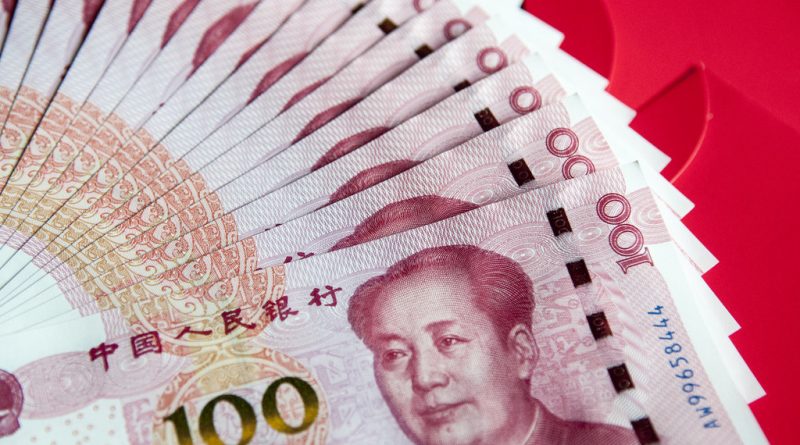India’s textile sector gears up for the digital yuan
The effect of the digital yuan on the textile industry of India is both positive and negative. On the one hand, it may lead to increased competition from Chinese textile manufacturers who can take advantage of lower transaction costs associated with the digital yuan. Furthermore, if you are planning to use the digital yuan, you may check its official website, https://yuan-paygroup.com.
On the other hand, it could also allow Indian textile manufacturers to access new markets in China and other countries using the digital yuan. Overall, the digital yuan effect on India’s textile industry is likely mixed.
In India’s textile industry, the digital yuan is a must
The digital yuan is the first of its kind, a sovereign digital currency. As China looks to increase its global economic influence, the digital yuan could play a key role in promoting cross-border trade and investment. For Indian businesses, this could mean more opportunities to access the Chinese market.
The textile industry is one sector that could benefit from the digital yuan. In 2017, Indian textile and apparel exports to China were worth $3.2 billion, up from $2.8 billion in 2016.
The digital yuan could make it easier for Indian businesses to trade with their Chinese counterparts. It could also lead to more direct investment from China into the Indian textile industry, as businesses look to take advantage of the new opportunities created by digital currency.
In the long run, the digital yuan could help to reduce India’s trade deficit with China. In 2017, India’s trade deficit with China was $51.1 billion. The digital yuan could help reduce this deficit by making it easier for Indian businesses to export to China.
The digital yuan is also likely to impact the Indian economy more broadly and positively. As China looks to increase its global economic influence, the digital yuan could play a key role in promoting cross-border trade and investment. For Indian businesses, this could mean more opportunities to access the Chinese market.
Overall, the digital yuan is likely to impact the textile industry in India positively. It could make it easier for businesses to trade with their Chinese counterparts and lead to more direct investment from China into the Indian textile industry. In the long run, the digital yuan could help to reduce India’s trade deficit with China.
How is the digital yuan destroying the Indian textile industry?
The rise of the digital yuan may hurt the textile industry in India. The digital yuan is a more efficient and cost-effective alternative to traditional fiat currencies. As such, it could potentially undercut the Indian rupee. It would make it more difficult for Indian textile companies to compete against their Chinese counterparts, who would be able to take advantage of the digital yuan’s lower transaction costs.
In addition, the digital yuan could also lead to increased capital outflows from India as investors seek to take advantage of its higher interest rates. It could further pressure the Indian rupee and make it even more difficult for Indian textile companies to compete globally.
Digital yuan: a new big thing for the Indian textile industry
The digital yuan aims to replace paper money and reduce the reliance on US dollars. There are many benefits of using digital yuan, such as it will help reduce the costs of printing and circulating paper money.
It could make it easier for Chinese citizens to travel overseas and make purchases in other countries.
The textile industry is one of India’s oldest and most important industries. It contributes significantly to the country’s GDP and employs millions of people. However, the industry has been facing challenges in recent years, such as competition from cheaper imported fabrics, rising production costs, and a lack of innovation.
However, the industry is expected to grow due to the growing demand for Indian fabrics abroad, the growing middle class in India, the government’s initiatives to boost the sector, and the future of the textile industry in India is expected to be bright.
India’s textile industry faces numerous challenges
The textile industry in India faces several challenges, adversely affecting its growth and development.
Low productivity: One of the major challenges the textile industry faces in India is low productivity. It is due to outdated technology, a low level of mechanization, and a lack of skilled labor. As a result of this, the textile industry in India is not able to compete with its global counterparts.
High cost of raw materials: Another challenge faced by the textile industry in India is the high cost. The high cost of raw materials is making the textile industry in India uncompetitive.
Lack of quality control: Lack of quality control is another major challenge faced by the textile industry in India.
Intense competition: The textile industry in India is also facing intense competition from its global counterparts.
Environmental regulations: The textile industry in India is also subject to several environmental regulations, making it difficult for the industry to operate.
Conclusion
The Indian textile sector will be greatly impacted by the digital yuan. On the one hand, it will promote the renminbi’s internationalization and expand the use of the renminbi in global trade.
On the other hand, the digital yuan will also accelerate the process of financial inclusion in India and provide small and medium-sized enterprises in the textile industry with easier access to financing.

